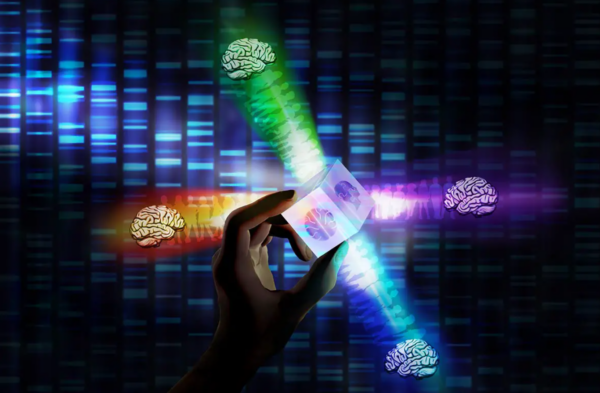Weill Cornell Medical researchers found four brain activity and behavioural subgroups of autism spectrum disorder.
The study, published in Nature Neuroscience on March 9, used machine learning to examine newly accessible neuroimaging data from 299 autistic patients and 907 neurotypical persons.
They discovered neural connections connected to autistic symptoms including linguistic ability, social affect, and repetitive or stereotypic behaviors. They reproduced the four autistic subgroups in a second dataset and demonstrated that regional gene expression and protein-protein interactions explain brain and behavioral differences.
Machine learning research of Weill Cornell Medical neuroimaging data revealed four autism spectrum disorder classifications, potentially enabling more customized treatments.

Autism spectrum disorder, like many neuropsychiatric illnesses, causes social, communicative, and repetitive behavior issues. “Scientists believe there are probably many different types of autism spectrum disorder that might require different treatments, but there is no consensus on how to define them,” said co-senior author Dr. Conor Liston, an associate professor of psychiatry and neuroscience in the Feil Family Brain and Mind Research Institute at Weill Cornell Medicine. “Our work demonstrates a novel way to finding autism subgroups that may lead to improved diagnostic and treatment methods.”
Dr. Liston and colleagues utilized comparable machine-learning algorithms to uncover four physiologically unique depression subtypes in Nature Medicine in 2017. Subgroups respond differently to different depression medications.
“If you place individuals with depression in the proper group, you can assign them the optimal therapy,” said lead author Dr. Amanda Buch, a Weill Cornell Medical postdoctoral associate of neuroscience in psychiatry.
After that accomplishment, the scientists investigated if autistic subgroups share gene pathways. She highlighted that autism is a highly heritable illness linked to hundreds of genes with various symptoms and few treatments. Dr. Buch introduced novel techniques for combining neuroimaging, gene expression, and proteomics data to the lab to test and create theories about how risk variants interact in autistic subgroups.
Finding Four Separate Subtypes of Autism via Brain Imaging
Dr. Buch explained that broad diagnostic criteria apply to a big and phenotypically varied group of people with distinct biological causes, which makes creating therapy for autism difficult. Understand and target biological diversity to tailor autism therapy. When everyone is treated the same when they’re all different, it’s hard to find the best treatment.
Dr. Buch emphasized that until recently, autism functional magnetic resonance imaging data was not large enough to undertake large-scale machine learning investigations. The study’s big dataset was contributed by Dr. Adriana Di Martino, research head of the Autism Center at the Child Mind Institute, and colleagues nationwide.
Dr. Logan Grosenick, an assistant professor of neuroscience in psychiatry at Weill Cornell Medical, pioneered machine-learning approaches for biological subtyping in the autism and depression investigations.
The scientists identified four clinically different autism groupings using those improvements. Two groups were above-average verbally. Both groups exhibited substantial social communication problems, although one had more repetitive behaviors and less social impairment. The subgroup with higher social impairment had overactive connections between the brain’s visual processing and salient information-identifying regions. The more repetitious group had weaker connections.
“It was interesting on a brain circuit level that there were similar brain networks implicated in both of these subtypes, but the connections in these same networks were atypical in opposite directions,” said Dr. Buch, who completed her doctorate at Weill Cornell Graduate School of Medical Sciences in Dr. Liston’s lab and now works in Dr. Grosenick’s lab.
Two additional groups had verbal skills but social deficits. Despite behavioral similarities, these groups have different brain connections.
To determine why each grouping had unusual brain connections, the scientists investigated gene expression and discovered multiple autism-linked genes. They investigated for hub proteins in network interactions between proteins involved in aberrant brain connections. In the subset of those with higher social impairment but less repeated behaviors, oxytocin was a hub protein. Dr. Buch reported mixed findings from autism studies using intranasal oxytocin. She suggested testing if oxytocin treatment works better in this subset.
“You might have medication that is effective in a subset of patients with autism, but that benefit washes out in the overall study because you are not paying attention to subgroups,” Dr. Grosenick said.
Another human dataset verified the four categories. Dr. Buch’s impartial text-mining study of biomedical literature confirmed the team’s findings by showing that other research have independently linked autism-related genes to the subgroups’ behavioral features.
The scientists will then test subgroup-targeted therapies in animals. Many research teams with substantial human datasets are collaborating. The team is also improving machine-learning methods.
Dr. Grosenick remarked, “We are striving to make our machine learning more cluster-aware.
Dr. Buch reported that autistic people have praised their efforts. During a lecture, a researcher with autism told Dr. Buch that her results helped explain his diagnosis, which was baffling because his autism was so distinct.
Dr. Buch stated a subtype of autism diagnosis may have helped him.

